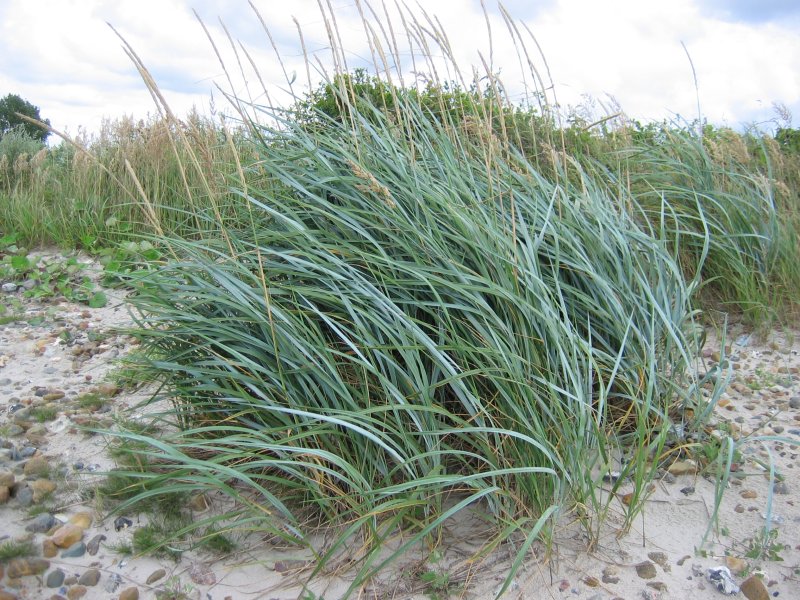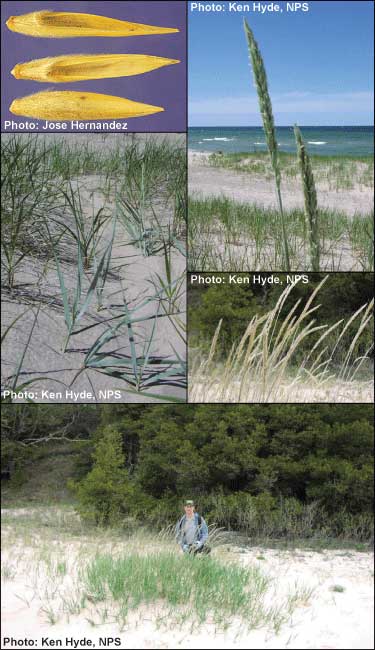|
Blue lyme grass (Leymus arenarius)
What problems does lyme grass cause? Like other invasive plants on the top 12 for northwest Michigan, lyme grass out-competes native plants and provides little food or other habitat for wildlife. When Lake Michigan water levels drop over time it allows lyme grass to invade beaches, dunes and other sites with sandy soils. The stabilization from the roots eliminate the natural sand shifting which is needed for the rare Pitcher's thistle (Cirsium pitcheri). What does lyme grass look like? The leaves and stems of lyme grass are blue-glaucous; the stems are hairless or nearly so at the summit and the leaves are 6-15mm wide with crowded sheaths at the base. Flowers are arranges in a spike with 4-6 spikelets usually paired at the nodes. How do I manage lyme grass? Monitor beaches and dunes, especially where it has been used adjacent in landscaping. It can sprout from rhizomes and root fragments, so mechanical methods of removal are not recommended. Lyme grass may be treated with herbicide in spring while native species are dormant; be sure to follow up to ensure no further treatment is needed. |
| habitatmatters.org |
Contact US231-252-4148
3334 Veterans Drive Unit A Traverse City, Michigan 49685 |
Pleasant Peninsula Design, Habitat Matters 2017



